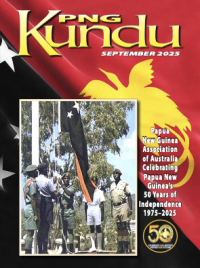Fun days in PNG broadcasting, Richard Jones
I’ve been broadcasting either from the studio or from outside locations since the mid-1960s. When I started calling amateur boxing tournaments from ringside for the ABC’s 9PA Port Moresby-9RB Rabaul radio network in the late 1960s the apparatus and the way in which we worked was fairly rudimentary.
The finals of the Papuan Amateur Boxing Association tournament always went to air, topped only by the national championships of that particular year. The national titles were staged on the New Guinea side in Rabaul, Lae or Madang and in Moresby every alternate year.
To get the fighters and officials representing Papua to the national title bouts on the other side of the country we chartered old DC3s, the workhorses of the air in Pacific island countries of the time. I have no doubt that in some out-of-the-way places in Asia or Africa the occasional DC3 still rattles down the runway before lumbering into the air.
But back to the commentating. Located as we were square on to the ring with the ABC technicians in close attendance behind, at the end of each round we needed to watch which way the boxers were spitting. The corner attendants would hold out buckets for their charges to spit into.
The highlights of the PNG fight game came when professional boxing really grabbed hold of the public imagination in the early 70s. We had two fighters—Martin Beni and Johnny Aba—who were ranked in the Commonwealth’s Top Ten in their weight divisions. I’ve written about Beni’s exploits for Una Voce before. He was loved by Moresby fans and the general public.
But what about live broadcasts of other sports?
Rugby League was regularly broadcast. Papua New Guinea is believed to be the only nation on the planet where rugby league is the national code. It has been huge there since the late 1950s. Every year two inter-Territory matches were played between Papua and New Guinea.
As for boxing and other sports, Moresby was the venue when it was Papua’s turn to act as host. The towns of Lae, Rabaul or Madang would host the big match when it was New Guinea’s turn, taking it in rotation. Occasionally the Highlands towns of Goroka or Mt Hagen would serve as the New Guinea venue.
Anyway, for about three years I was the rugby league scribe for the twice-weekly South Pacific Post, later the national daily Post-Courier. And from time to time I was asked to help call the Inter-Territory league matches: the highlights of the PNG sports year.
As a Victorian writing rugby league (long before there was a Melbourne Storm playing in the NRL) it caused Queenslanders and punters from NSW a lot of heartburn and angst, but that’s a story for another day.
One year we were in Rabaul for the first match of the series. A flimsy bamboo and kunai grass structure had been erected, and that’s where the broadcasting headsets and paraphernalia had been arranged. Standing up to call the action down the far end of the field, my over-enthusiastic co-broadcaster leaned out to see if a tackler had taken the ball carrier over the sideline. He stood on a key component of our ‘broadcast house’ structure and the whole thing went on a tilt. Not quite as severe as Pisa’s leaning tower, but alarming nevertheless.
Perched some metres above the crowd below us we remained seated for the rest of the afternoon no matter where the ball or the players went. No comfort stops at half-time, either.
As it was we had to align ourselves somewhat unnaturally just to ensure the whole thing didn’t collapse. A relieved three or four blokes scuttled down the ladder onto terra firma at the end of proceedings.
I have an idea Papua won the game although personal safety, rather than match statistics, remained our prime concern.


